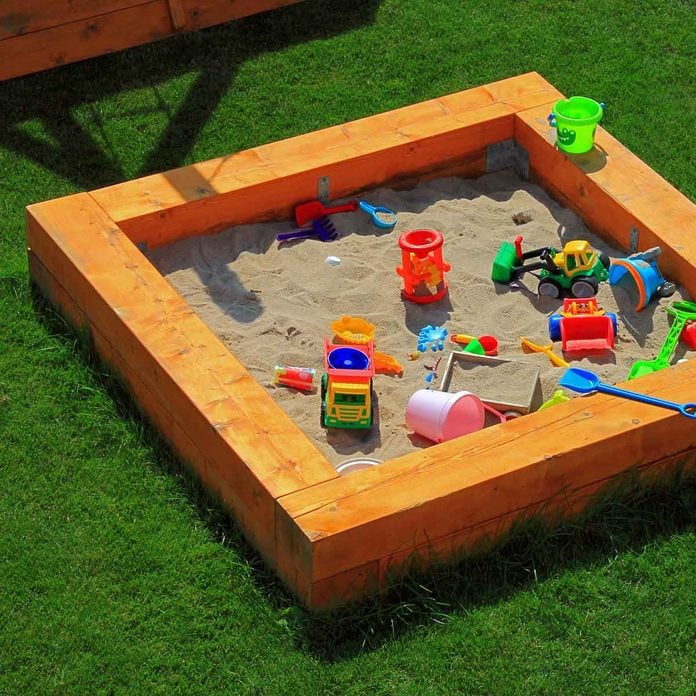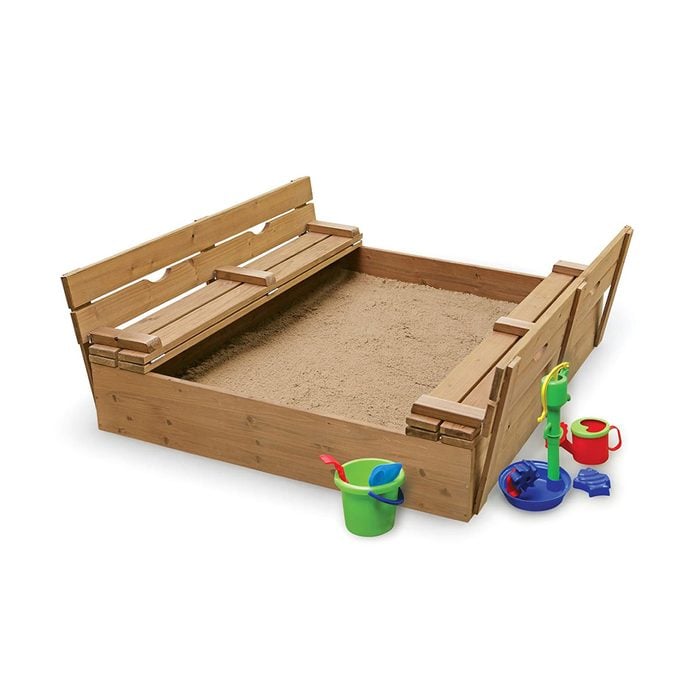
Convertible Cover Sandbox
This Convertible Cedar Sandbox features a built-in cover that doubles as bench seats for your kids! The wood lid is constructed with hinges so you can conveniently fold it into perfect kid-size benches. When playtime is over, simply fold the benches flat to protect the sand from animals and debris.
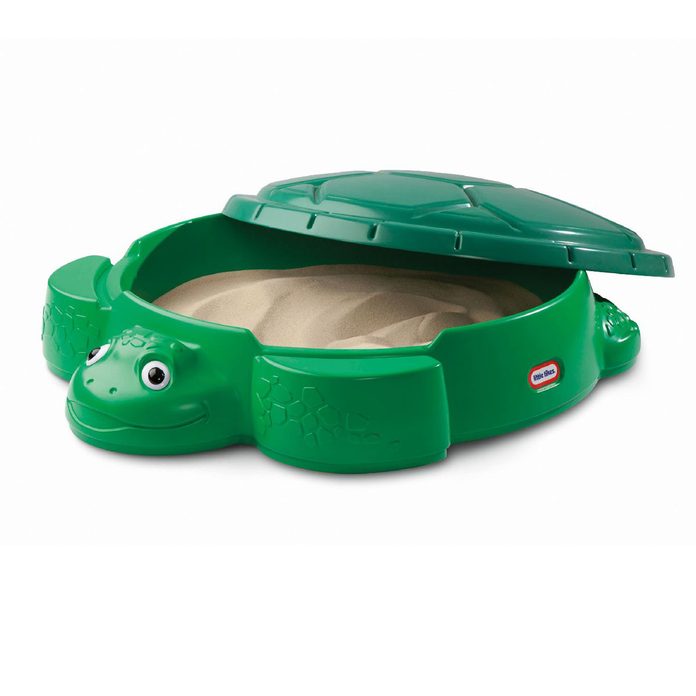
Turtle Sandbox with Lid
Of course, the easiest way to cover a sandbox is to purchase one that comes with a lid! In this adorable Little Tikes Turtle Sandbox ($40), the shell lid keeps bugs, cats and rain out. Just keep in mind the small size of this sandbox is best for younger children, which means your kids will outgrow it quickly.
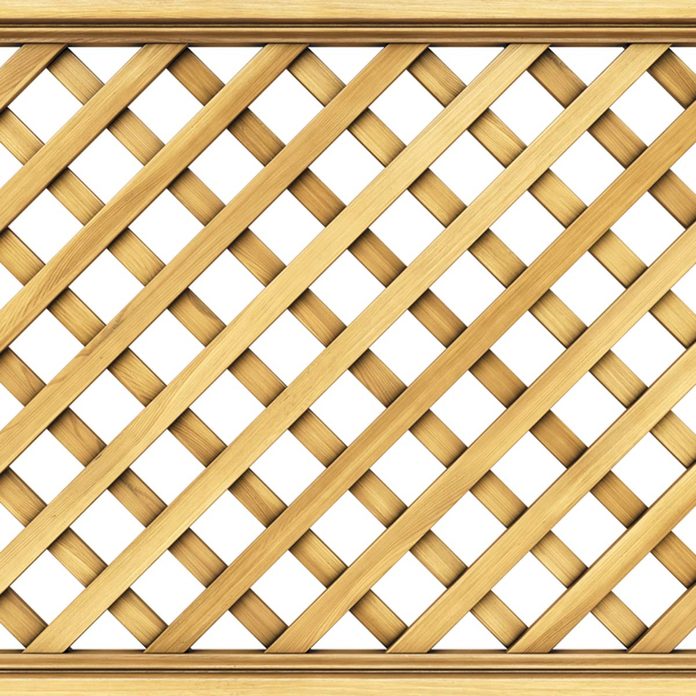
Vinyl Lattice
Another DIY sandbox cover idea is a sheet of vinyl lattice ($30). Most often used as garden fencing, it makes a great sandbox cover if cats or other animals are your main concern, though it won’t protect the sand from rain or bugs. We prefer the vinyl material to wood because it’s weather resistant and resists warping. The best part? No installation needed! Just lay the lattice on top of your sandbox.
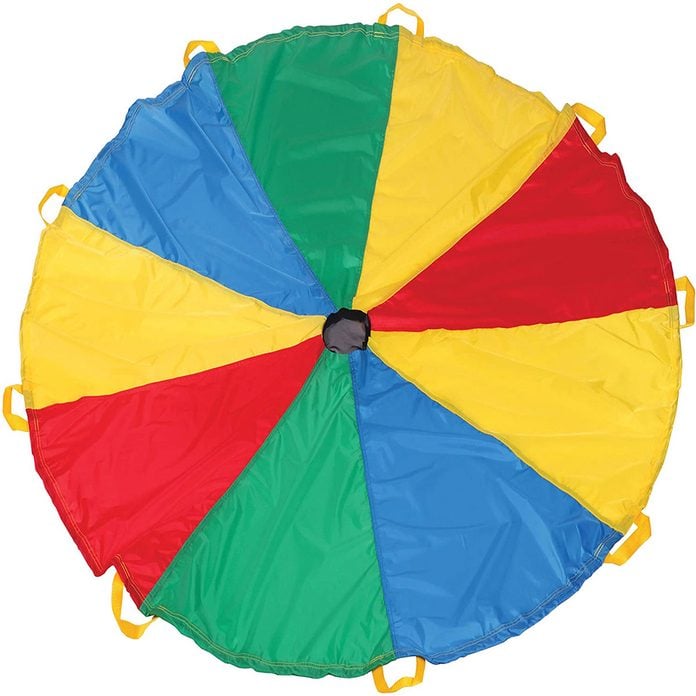
Parachute and Garden Stakes
If you have a round sandbox, consider a kids’ play parachute ($23) for the cover. To keep it from blowing away, secure it to the ground with garden staples ($17). Use a staple for each parachute handles. Plus, we love the playfulness of a colorful parachute cover instead of a boring brown tarp.
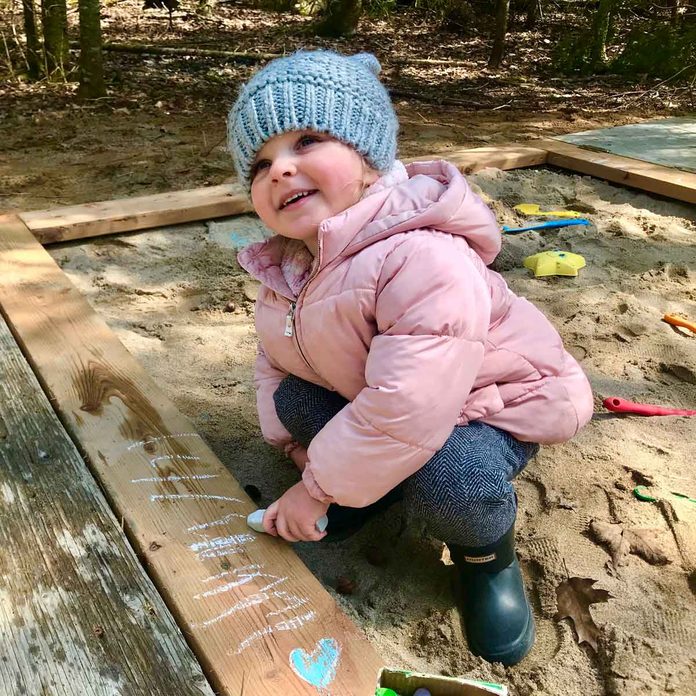
Build A Covered Sandbox
If you’re in the mood for a weekend project, build a covered sand box yourself. The cost depends on the materials you choose. The plans for this wooden sand box include seat boards that give your kids a comfy place to sit, or set their snack or beverage while they play. Two hinged doors with handles protect the sand when not in use. There’s also a useful tip on how to drill small holes in the doors to keep the sand ventilated.
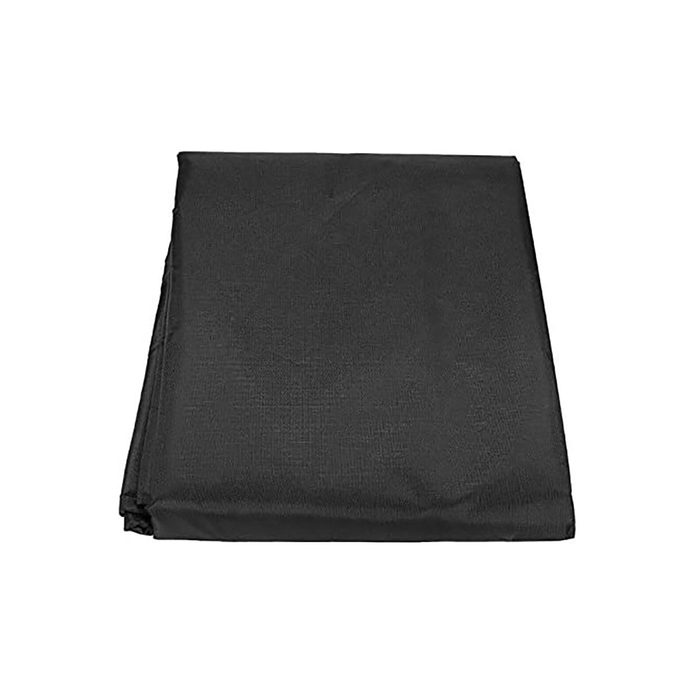
Sandbox Cover with Drawstring
If you want to keep rain out, this ready-made sandbox cover ($16 to $30) is waterproof and comes in four sizes. We like the built-in drawstring that helps tightly secure the cover to the perimeter of the sandbox. When not needed, simply fold up the cover for easy storage.
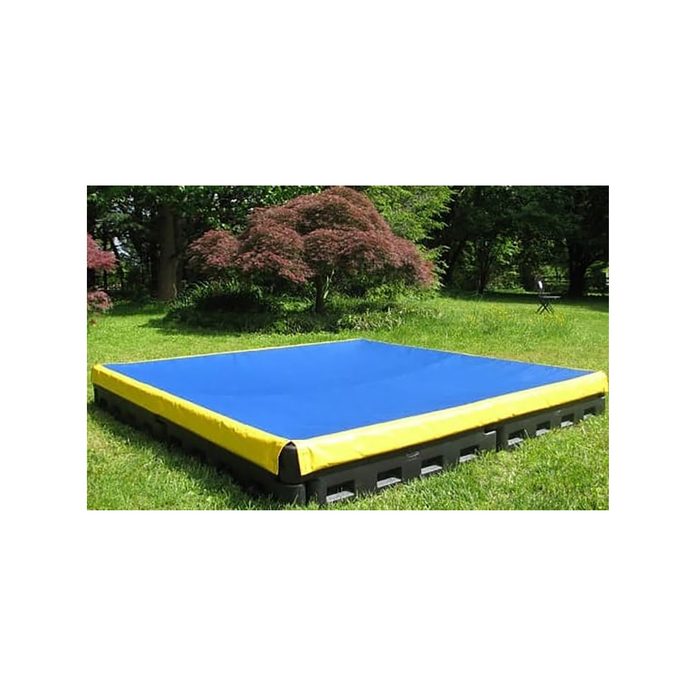
Weighted Edge Sandbox Cover
This sandbox cover doesn’t require ties or snaps to keep it in place. Instead, a length of chain is sewn into the outside edges of the cover. The heavy edges hang over the sides of the sandbox and weigh down the cover. Genius! The Weighted Sandbox Cover (prices start at $200) is available in many sizes and you can choose from mesh or vinyl fabric.
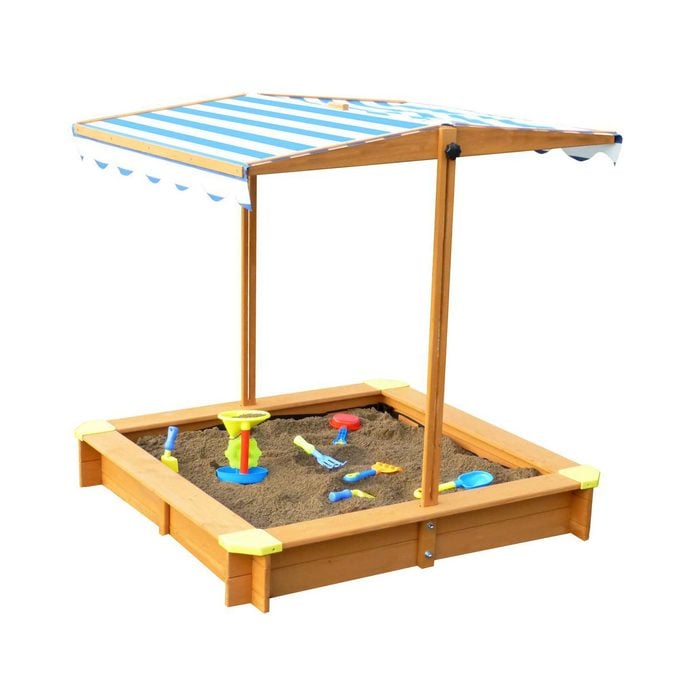
Canopy Sandbox Cover
This Sandbox with Canopy ($90) is a winner because the canopy doubles as a sun shade and a sandbox cover. You can adjust the height and angle of the retractable canopy to shade your kids from the sun while they play. When playtime is over, lower the canopy to the closed position to keep the sandbox fully covered.
FAQs
Should a sandbox be covered?
When a sandbox is not in use, it should be covered. Covering your sandbox will protect it from weather such as rain, snow or wind, debris, such as leaves or dirt, and most importantly, wild animals or cats that may try to use it as a little box. The sandbox cover should be securely fastened so that animals and kids aren’t able to get inside and trapped underneath.
What is the best material to cover a sandbox?
The best type of material to use to cover your sandbox depends on the climate you live in and what level of protection you’re looking for. Common types of materials used for sandbox covers are wood, plastic, mesh or netting and vinyl. If you need a quick solution to cover your sandbox for a few weeks during the summer while your grandkids are visiting, plastic may be the way to go. It’s affordable and easy to find, but be aware that it’s not very durable so it may only last one season. If your kids play in the sandbox year-round, a sturdier material that better protects the sand such as wood or vinyl might be the way to go.
Can mold grow in a sandbox?
Mold needs moisture and warmth to grow, so yes, it can grow in a sandbox. Using a cover can help to keep rain out, minimizing the possibility of mold growth. Make sure your sandbox cover has some form of ventilation so that moisture doesn’t get trapped underneath. Keep your sandbox in a sunny area (mold also thrives in dark, damp environments) and inspect it often for spots of dampness or mold growth.

